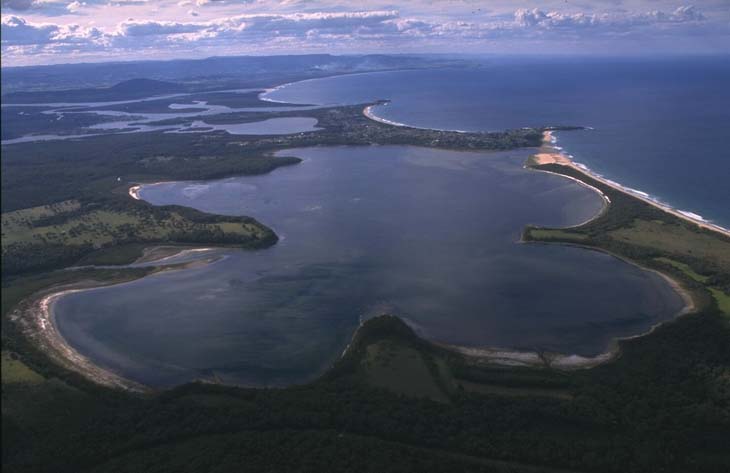Wollumboola Lake is located on the south coast of New South Wales near Gerringong. It is classed as a large back-dune lagoon with an intermittently closed entrance.
The foreshore of this expansive shallow lake is relatively undisturbed and its wetland communities are listed in the Directory of Important Wetlands in Australia.
Water quality report card
As part of our water quality monitoring program we assess the water quality and ecosystem health of an estuary using a range of relevant indicators. We sample a subset of the estuaries between Wollongong and the Victorian border every 3 years. The most recent sampling in Wollumboola Lake was completed over the 2017–18 summer when 2 sites were sampled on a monthly basis.
This report card represents 2 water quality indicators that we routinely measure: the amount of algae present and water clarity. Low levels of these 2 indicators equate with good water quality.
Algae
Water clarity
Overall grade
The report card shows the condition of the estuary was fair with:
- algae abundance graded good (B)
- water clarity graded poor (D)
- overall estuary health graded fair (C).
Grades for algae, water clarity and overall are represented as:
- A – excellent
- B – good
- C – fair
- D – poor
- E – very poor.
Go to estuary report cards to find out what each grade means, read our sampling, data analysis and reporting protocols, and find out how we calculate these grades.
We have monitored water quality in Wollumboola Lake since 2011. This table shows the water quality grades for this estuary over that time.
| Year | Algae | Water clarity | Overall grade |
|---|---|---|---|
| 2011–12 | A | C | B |
| 2013–14 | D | C | D |
Physical characteristics
| Estuary type | Back-dune lagoon |
|---|---|
| Latitude | –34.94 (ºS) |
| Longitude | 150.78 (ºE) |
| Catchment area | 34.1 km2 |
| Estuary area | 6.3 km2 |
| Estuary volume | 4979.3 ML |
| Average depth | 0.8 m |
Notes: km2 = square kilometres; m = metres; ML = megalitres.
Water depth and survey data
Bathymetric and coastal topography data for this estuary are available in our data portal.
Land use
The catchment of Wollumboola Lake has relatively low disturbance as most of the catchment is within Jervis Bay National Park. Urban areas such as Culburra Beach, rural residence and grazing areas combined occupy less than 10% of the catchment.
National and marine parks
- Jervis Bay National Park is the largest conservation area within this catchment.
- This estuary does not flow into a marine park.
Citizen science projects
- The Budawang Coast Nature Map is an online data platform the community can use to record and identify biodiversity. Data collected is used to map the distribution of native plant and animal species from Moruya up almost to Kiama.
Community involvement
- Shoalhaven City Council’s Bushcare webpage provides links to a range of active groups in and around this catchment.
- The Shoalhaven Landcare Association represents a range of volunteer groups working in and around the Wollumboola Lake.

Aerial view of Wollumboola Lake
Local government management
Local councils manage estuaries within their area unless the estuary is attached to a marine park.
This estuary is managed by Shoalhaven City Council. Information about how the council manages its estuaries is available on their Coasts and waterways webpage.
Threatened species
The large sandy expanses around the entrance of Wollumboola Lake provides important breeding grounds and habitat for the endangered little tern.
Read more about the biodiversity in our estuaries.